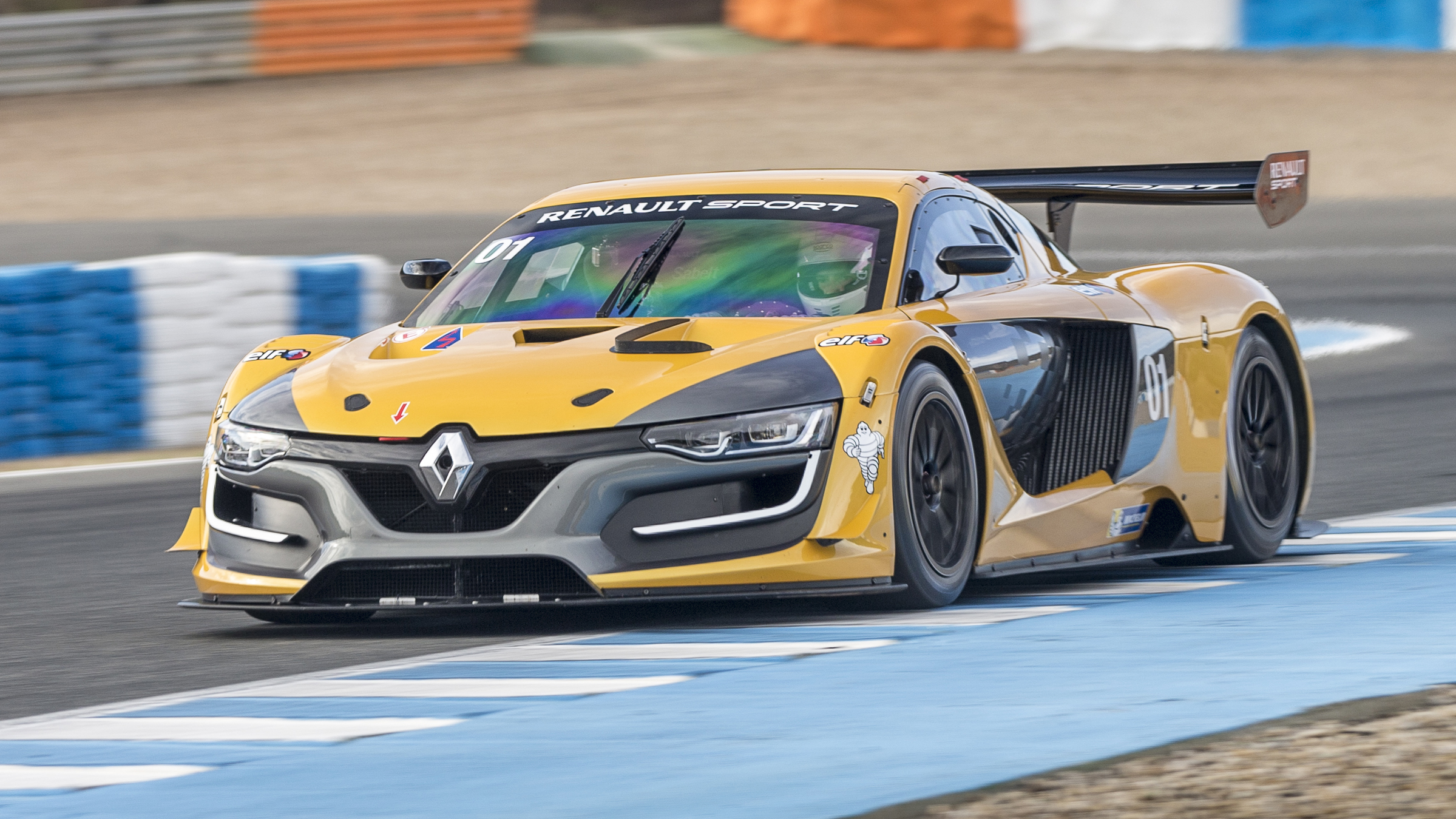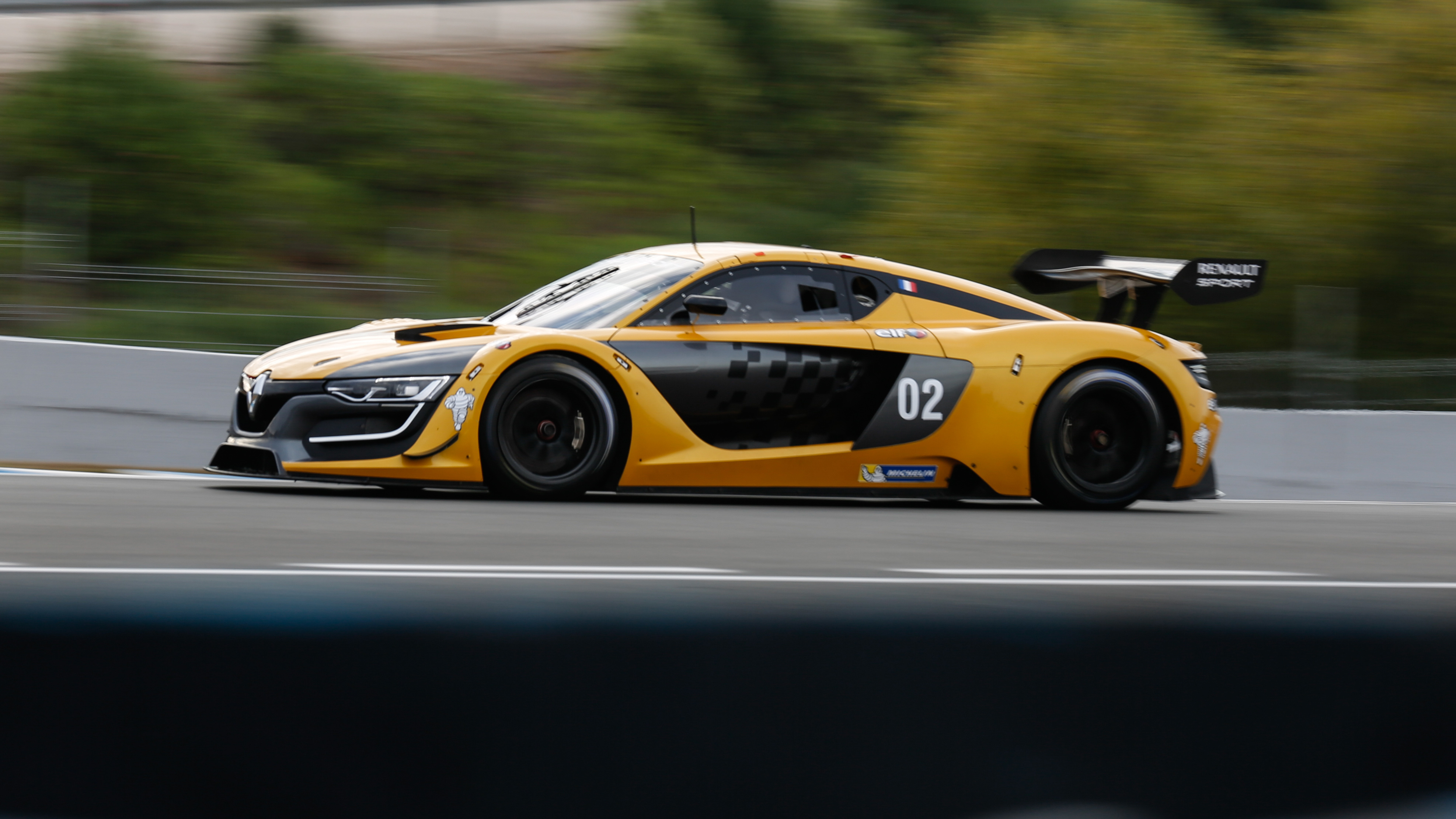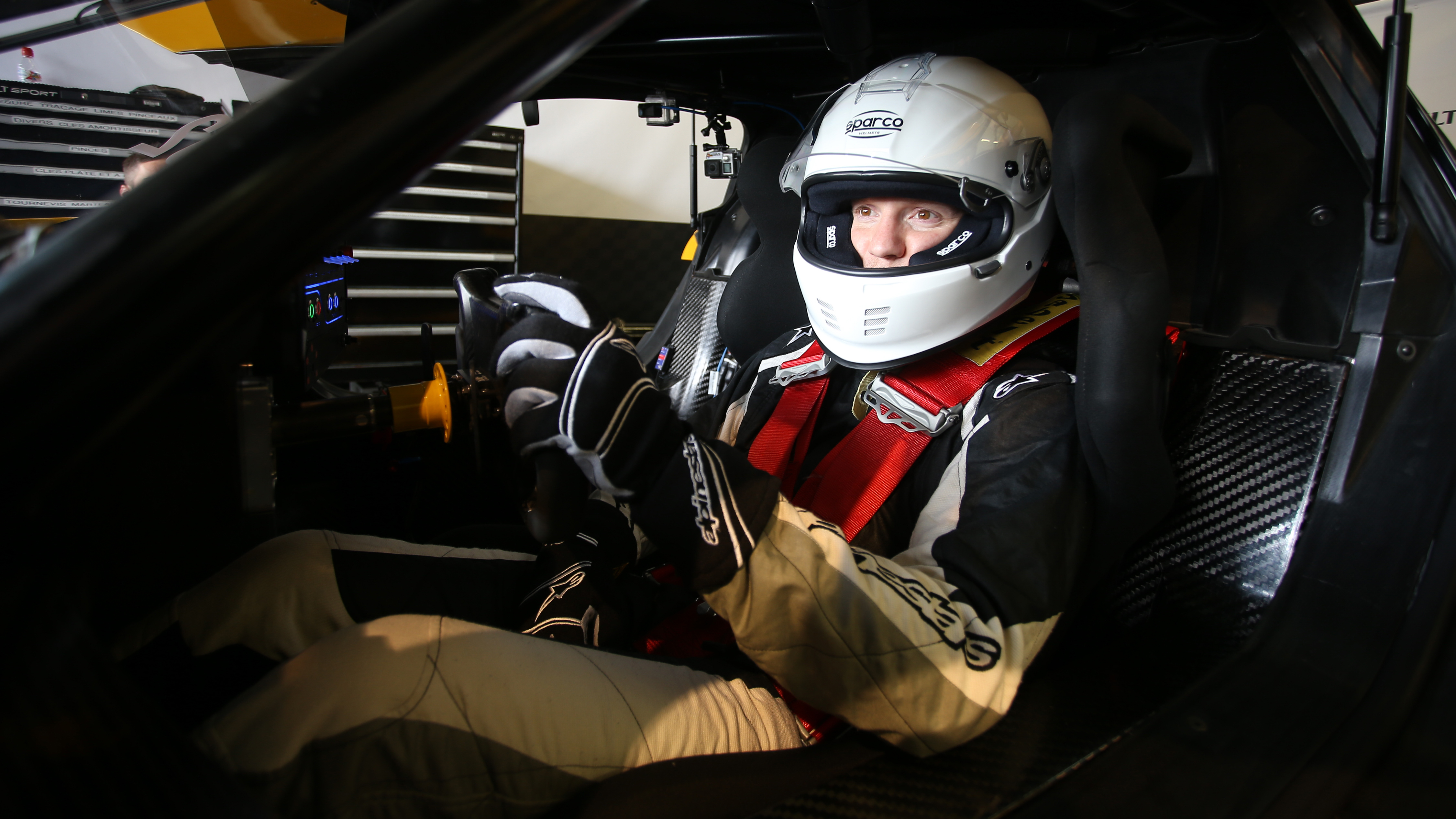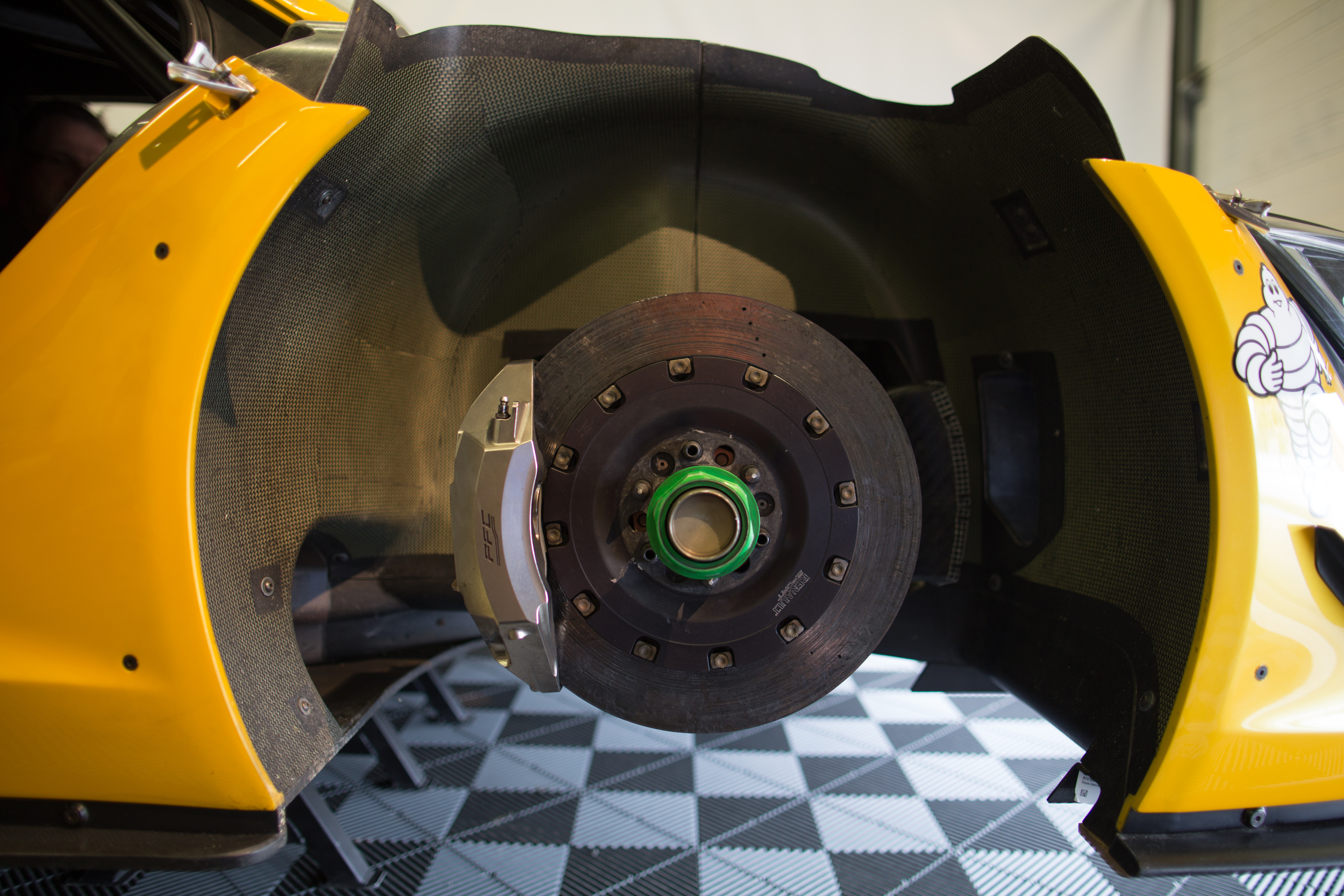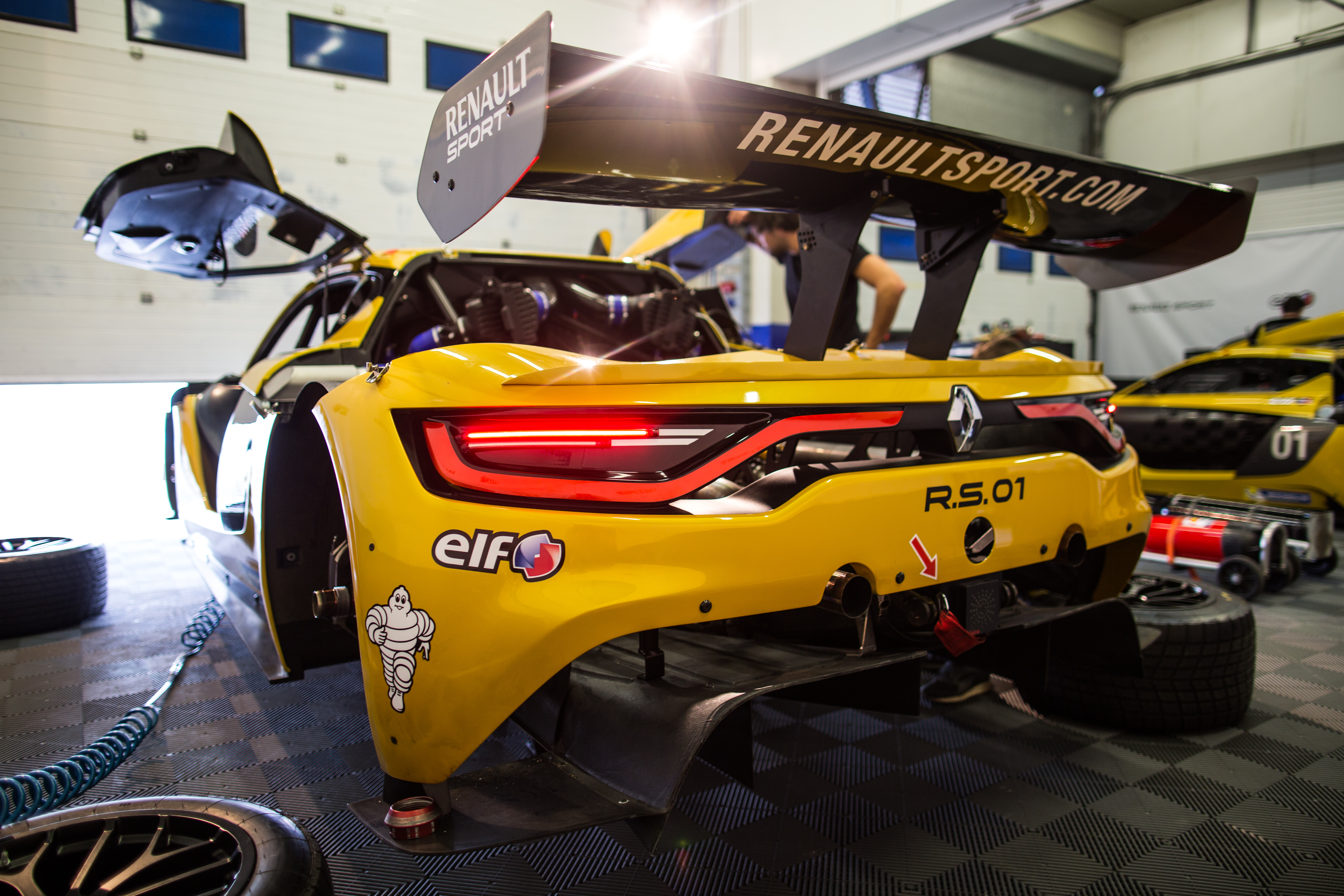
First drive: what’s Renault's 550bhp R.S. 01 racer like to drive?
What’s this, then?
This is the R.S. 01, a fully bespoke racecar designed to compete in Renault Sport Trophy one-make series. It has nothing to do with any of Renault’s current range, Alpine project included. Its job is to look ridiculously cool (big tick there) and be blindingly fast around a track (more on that in a bit).
It’s not messing around either. Renault claims the R.S. 01 is a full second quicker per racing kilometre than a GT3-spec Ferrari 458, McLaren 650S or Porsche 911. Right now Renault is working on a restricted GT3-compatible setup to broaden its appeal to customers.
So what’s the secret of its speed?
At the R.S. 01’s core is a Dallara-developed carbon-fibre monocoque chassis, so the whole thing weighs 1,150kg – roughly the same as a Ford Fiesta. Mounted just in front of the rear axle is a 3.8-litre twin-turbo V6 lifted from the Nissan GT-R, but dry-sumped and producing 550bhp at 6,800rpm and 465lb ft of torque at 5,000rpm.
I have no official performance figures to dispense, but believe me, it has 600bhp supercars covered in a straight line, then destroys them in the braking zone and leaves them flailing helplessly in the corners. That’s courtesy of the bespoke Michelin slicks, carbon-ceramic brakes and a very serious aero package that produces 1.7 tonnes of downforce at its 186mph top speed. Crikey.
And Renault let you drive it?
I know, what were they thinking? Our window of opportunity came at the Jerez circuit (of F1 testing fame) and involved two blocks of six laps each – not enough to master the car, but more than enough to sample its character and scare myself witless in the process.
However, there were hurdles to overcome even before firing up the engine: folding myself under the gullwing doors and through the tiny opening, for one, but also making sense of the steering wheel strewn with dials for the ABS, traction control and throttle sensitivity, and buttons for the wipers, pit limiter and several others I decided not to touch.
So is it a scary bugger to drive?
Top Gear
Newsletter
Thank you for subscribing to our newsletter. Look out for your regular round-up of news, reviews and offers in your inbox.
Get all the latest news, reviews and exclusives, direct to your inbox.
No. Truth is, this is a car that’s been designed to test professional racing drivers on the ragged edge of what the tyre-track interface will allow, but also to be enjoyed by gentleman drivers whose limits aren’t quite so high.
So there’s power steering, the adjustable electronic nannies mentioned above and a seven-speed Sadev sequential gearbox with an anti-stall function that removes the need for a clutch pedal. Upshifts are accompanied by a stiff boot in the kidneys, but ultimately the transmission is no harder to navigate than a twin-clutch Clio.
So tell us about your laps then...
My fingers are still trembling from the adrenalin hit. Peeling out of the pitlane onto the track for the first time, caution is the key – the tyres and brakes both need heat before you can start leaning on them, so I enjoy the explosion of acceleration instead.
Straight-through pipes mean the serrated blare from the exhausts and Colt 45 gunshots on the overrun are fairly dominating, but then so is the zero-lag, unremitting shove in the back.
One lap down and the brakes and tyres are simmering away nicely. Time to squeeze the anchors at the end of the long start finish straight, then squeeze them harder. Then harder again. Stopping power is out of this world, but even with colossal thighs like Chris Hoy you’ll struggle to trigger the ABS.
Does it put up a fight in the corners?
Not at all. All this burly-chested performance and bleeding-edge technology, and the R.S. 01 is a relative pussycat when you crack on.
Starting with the steering: it’s light because it’s power assisted, but there’s still more feedback than most road cars, barring perhaps a Cayman GT4. Twitch your wrists – no, think about twitching your wrists – and the front end snaps towards the apex, yet it never feels nervous just ultra-precise.
Get binary with your throttle inputs and it’ll smoke the rears (even with the traction control in its intermediate setting) as I discovered during two heart-in-gob moments. But it’s not a sudden breakaway, just a gentle reminder to keep things tidy.
Sounds easy...
Well, quite. Once the lines, gears and idiosyncrasies of each sector were burned into my memory, stringing them together became utterly natural. My lap times, although firmly in the ‘plucky gentleman racer bracket’ rather than anywhere near the pros, began to tumble accordingly.
And then it began to rain. A lot. Turns out slicks aren’t much use in a flash flood, so it quickly became a game of damage limitation, nursing the car – now like an elephant on ice skates – back to the pitlane.
A good tutorial in physics: with warm slicks being crushed into the tarmac by huge globs of downforce, the grip is simply phenomenal, and only grows the faster you go. In the wet, on the wrong tyres, the R.S. 01 is a proper handful.
How much does it cost?
Fully built and ready to race, an R.S. 01 will set you back €290,000 plus local taxes – about £250,000 all in. Want to keep it in your underground garage and drive it only on your private test track? Go right ahead, but Renault would prefer you to commit to its one-make series.
To do so you require a two-driver line-up – one pro and one amateur – plus an annual fee of £30,000 to compete in the Renault Sport Trophy (currently a 14-car grid). That covers six race weekends and several test days, but on top of that you’ll need to pay for tyres, spares, mechanics, transport and, presumably, a trophy spouse.
Not cheap then, but if you’ve got money to spare, we can’t think of a better way to burn it.
Featured

Trending this week
- Car Review
BMW 1 Series
- Top Gear's Top 9
Nine dreadful bits of 'homeware' made by carmakers




